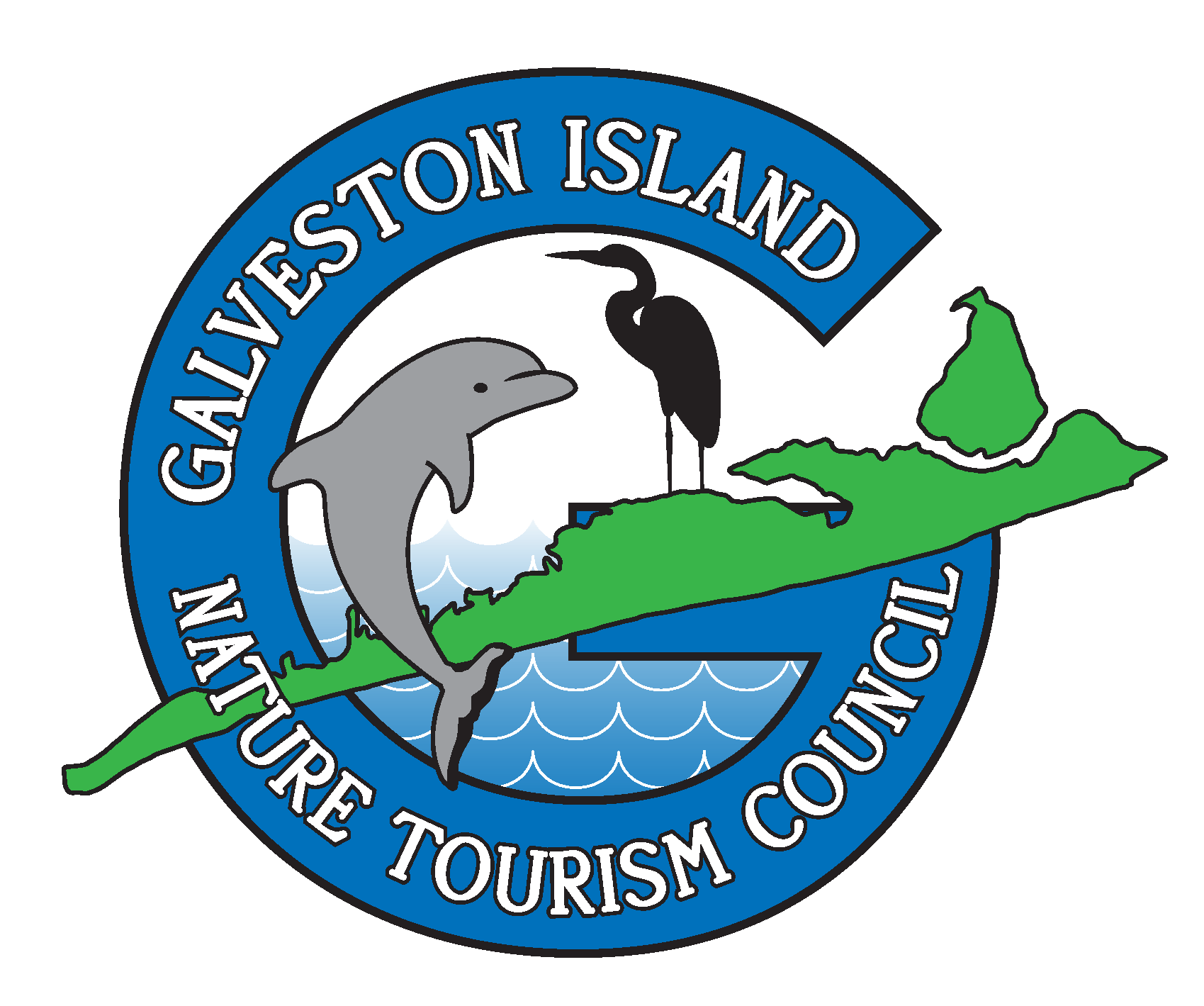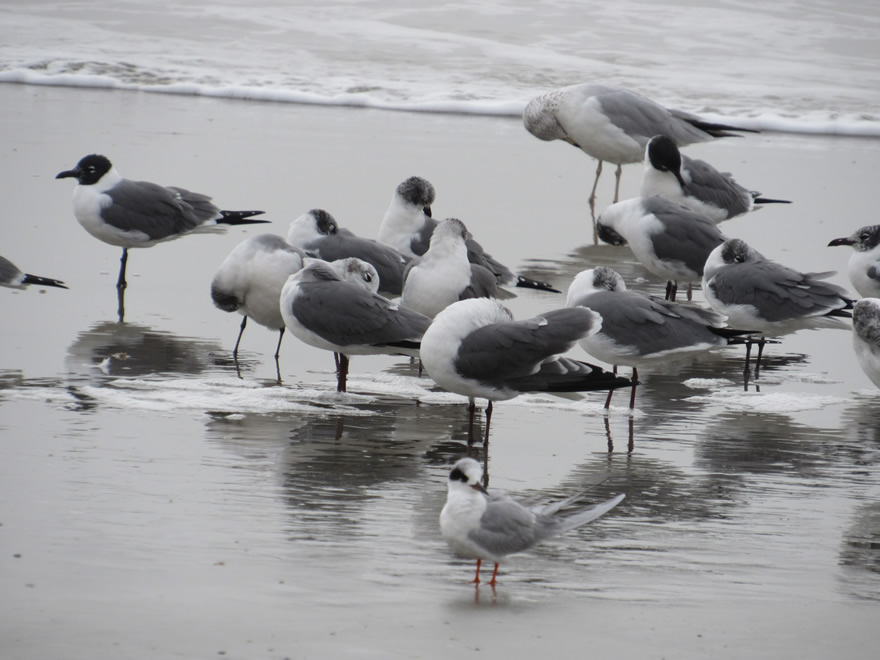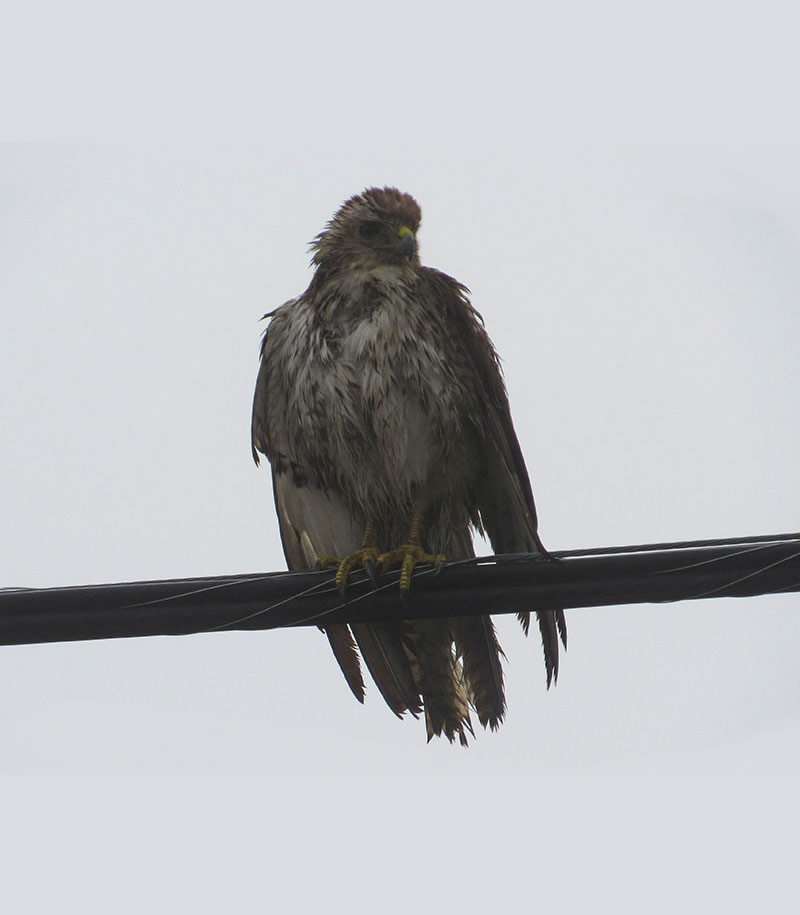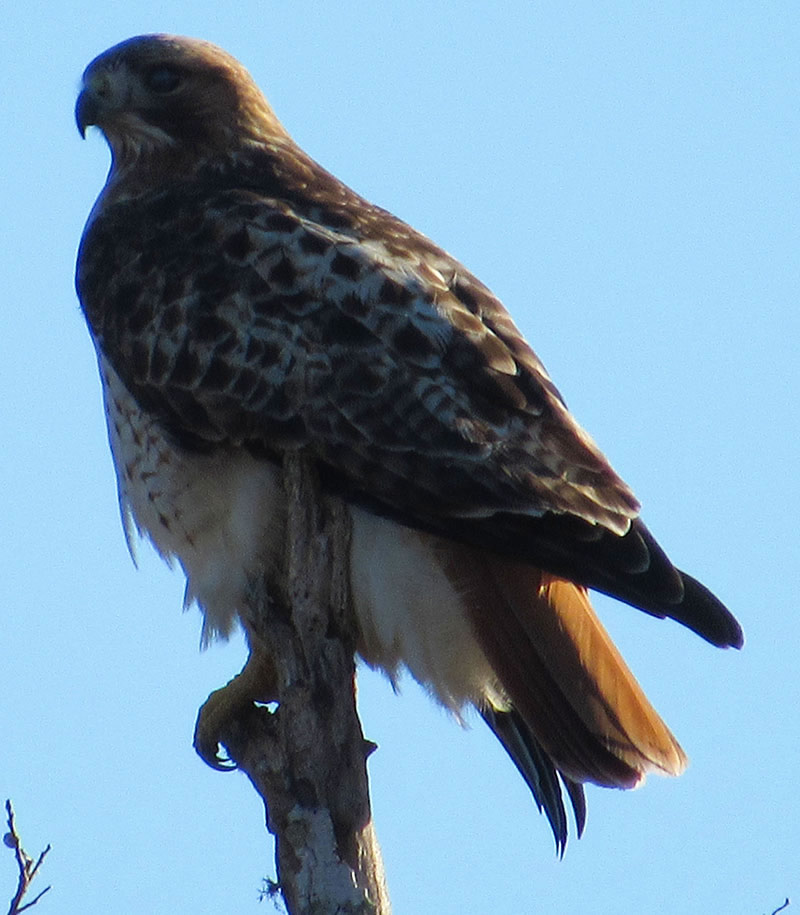It’s interesting to watch birds this time of year, because of all the plumage changes that are occurring. Adults of many species are molting from non-breeding (or basic) plumage into breeding (or alternate) plumage, and juvenile birds are molting into adult plumage. It’s not just feathers that get a new look for breeding season; in many species, increasing hormone levels cause color changes to facial skin, bills, and legs. All these variations in plumage happening at the same time provide a great opportunity to brush up on your identification skills.
In just the last two weeks, we’ve seen increasing numbers of Laughing Gulls and Forster’s Terns already sporting their spring finery, with flocks now containing an equal mix of both plumage variations. While Laughing Gulls become easier to identify during breeding season, the opposite is true of Forster’s Terns, which are distinctive in the winter but easily confused with Common Terns when in breeding plumage. Molting birds can appear pretty scraggly, with old feathers looking very worn and ragged, and patches of missing feathers here and there. Wing and tail feathers molt symmetrically, with the same feathers changing out on each side, so that balance is not affected during flight.
Raptors take up to four years to molt into adult plumage, making identification particularly challenging. This is especially true of one of our most common winter migrants, the Red-tailed Hawk. We’ve seen up to a dozen individuals in a few hours’ time, with no two looking the same. Although the tail is not always red, a great field mark to look for in any plumage is the light chevron patterning on the back that forms a V-shape.
I always enjoy the opportunity to practice my identification skills, and it’s always fascinating to see nature at work!
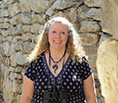
Kristine Rivers founded Birding for Fun in 2015, and is a popular tour guide and speaker whose enthusiasm for nature is contagious. A lifelong birder, she has been an area leader for the Brazoria Columbia Bottomlands Christmas Bird Count since 2011, and has been President of the Texas Master Naturalist Cradle of Texas chapter since January 2017.
Photo Credits: Kristine Rivers
